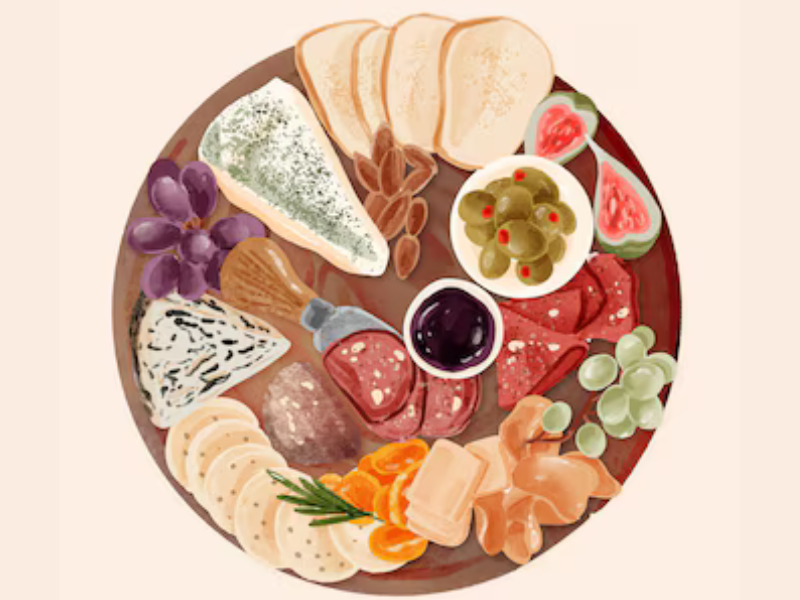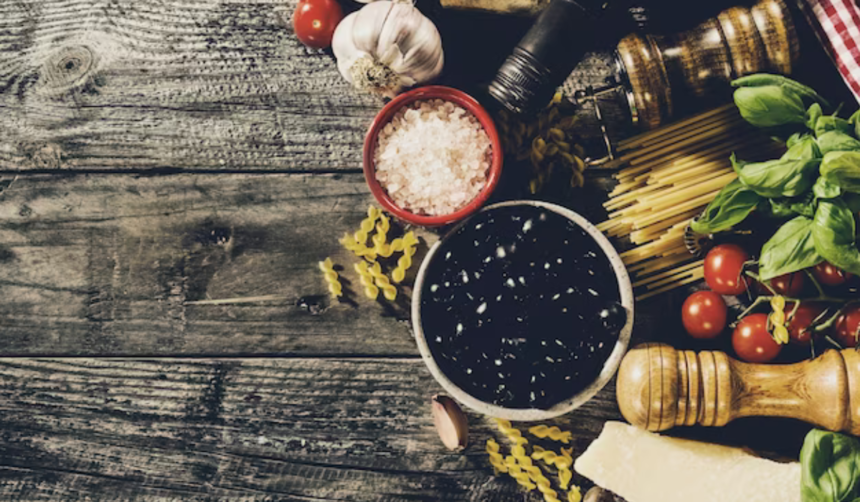Indulge in Italy: Exploring the Delicious Flavors of Italian Cuisine
Italy is known for its rich culinary traditions and mouthwatering dishes that have captivated food lovers around the world. From pizzas and pastas to gelato and wines, Italian cuisine has something for everyone. In this article, we will take a closer look at the delicious flavors of Italian cuisine and explore the diverse culinary landscape of this beautiful country.
1. The Origins of Italian Cuisine
Italian cuisine has a long and fascinating history that dates back to ancient times. Influenced by the Greeks, Romans, and Arabs, Italian food has evolved over the centuries to become the delicious and diverse cuisine that we know today.
2. Regional Specialties
One of the most unique aspects of Italian cuisine is its regional diversity. From the creamy risottos of Lombardy to the seafood dishes of Sicily, each region of Italy has its own specialties and flavors to offer.
3. Northern Italian Cuisine
In the northern regions of Italy, you will find hearty dishes like polenta, risotto, and cured meats. The use of butter and cream is more common in this part of the country, resulting in rich and flavorful dishes.
4. Central Italian Cuisine
Central Italy is home to classics like pasta carbonara, lasagna, and porchetta. The cuisine here is characterized by simple yet delicious dishes that highlight the quality of the ingredients.
5. Southern Italian Cuisine
In the southern regions of Italy, you will find a strong Mediterranean influence with dishes that feature fresh seafood, olive oil, and tomatoes. Spicy flavors are also common in this part of the country, making dishes like pasta arrabbiata and caponata a must-try.
6. Pizza and Pasta
No discussion of Italian cuisine would be complete without mentioning two of its most iconic dishes: pizza and pasta. From the thin-crust pizzas of Naples to the handmade pastas of Bologna, these dishes are a staple of Italian cuisine and come in countless variations to suit every palate.

7. Antipasti
Italian meals often begin with a selection of antipasti, or appetizers, that showcase the flavors of the region. From bruschetta to prosciutto-wrapped melon, antipasti are the perfect way to start a meal in Italy.
8. Primi Piatti
Primi piatti, or first courses, are typically pasta or rice dishes that are served before the main course. Favorites like spaghetti alla carbonara, risotto alla milanese, and gnocchi are all popular choices for primi piatti.
9. Secondi Piatti
Secondi piatti, or second courses, are typically meat or fish dishes that are served after the primi piatti. From grilled lamb chops to pan-seared sea bass, these dishes showcase the diversity of Italian cuisine and are often accompanied by seasonal vegetables.
10. Dolci
No Italian meal is complete without dessert, or dolci. From creamy tiramisu to light and fluffy cannoli, Italian desserts are a sweet ending to a delicious meal and are not to be missed.
11. Gelato
Italian gelato is renowned around the world for its rich and creamy texture. Made with fresh milk, cream, and sugar, gelato comes in a variety of flavors like pistachio, hazelnut, and stracciatella, making it the perfect treat on a hot day.
12. Wine and Coffee
Italy is also famous for its wines and coffees, which are an integral part of the culinary experience. From bold reds like Chianti to sparkling whites like Prosecco, Italian wines are the perfect accompaniment to a delicious meal. And of course, no meal in Italy is complete without a strong espresso or a frothy cappuccino to finish off the experience.
13. Cooking Classes and Food Tours
For those looking to dive deeper into Italian cuisine, cooking classes and food tours are a great way to explore the flavors of the country. Whether you want to learn how to make fresh pasta from scratch or sample the best street food in Rome, there are endless opportunities to indulge in the culinary delights of Italy.
14. Farm-to-Table Dining
Italy is known for its commitment to using fresh, locally sourced ingredients in its cuisine. Many restaurants and trattorias in the country follow a farm-to-table philosophy, ensuring that every dish is made with the freshest and most flavorful ingredients available.
15. Conclusion
In conclusion, Italian cuisine is a celebration of food, flavor, and tradition that has captivated food lovers around the world. From the rich and hearty dishes of the north to the light and flavorful dishes of the south, Italian cuisine offers a culinary adventure that is not to be missed. So whether you’re indulging in a slice of pizza in Naples or savoring a bowl of risotto in Milan, be sure to explore the delicious flavors of Italian cuisine on your next culinary adventure. Buon appetito!
FAQs about “Indulge in Italy: Exploring the Delicious Flavors of Italian Cuisine”
- What distinguishes Italian cuisine from other culinary traditions, and why is it so beloved worldwide? Italian cuisine is characterized by its simplicity, emphasis on fresh, high-quality ingredients, and regional diversity. From the rich pasta dishes of the north to the fresh seafood of the south, Italy offers a wide array of flavors and specialties. Its popularity stems from its ability to satisfy the senses with rich flavors while maintaining a focus on simplicity and authenticity.
- What are some classic dishes and ingredients that epitomize Italian cuisine? Italian cuisine boasts a plethora of classic dishes and ingredients that have become beloved worldwide. Iconic dishes include spaghetti carbonara, margherita pizza, risotto alla milanese, and tiramisu. Essential ingredients include olive oil, tomatoes, basil, garlic, Parmigiano-Reggiano cheese, and balsamic vinegar, among others.
- Are there vegetarian or vegan options available in Italian cuisine? Yes, Italian cuisine offers numerous vegetarian and vegan options that are both delicious and satisfying. Vegetarian options include dishes like caprese salad, eggplant Parmesan, and mushroom risotto. For vegans, options include pasta with marinara sauce, bruschetta, and minestrone soup, among others. Additionally, many Italian restaurants offer vegan versions of classic dishes.
- How can I recreate the flavors of Italian cuisine at home if I’m not able to travel to Italy? Recreating Italian flavors at home is both rewarding and achievable with the right ingredients and recipes. Start by exploring classic Italian recipes and cooking techniques, using high-quality ingredients like extra virgin olive oil, San Marzano tomatoes, and fresh herbs. Many online resources, cookbooks, and cooking shows offer step-by-step instructions and tips to help you master Italian cooking in your own kitchen.
- What cultural traditions and customs are associated with Italian cuisine? Italian cuisine is deeply intertwined with cultural traditions and customs that have been passed down through generations. Meals are often seen as social occasions, bringing family and friends together to share in the joy of good food and company. Traditional Italian cooking methods, such as slow simmering sauces and handmade pasta, reflect a commitment to preserving culinary heritage. Additionally, many Italian festivals and celebrations revolve around food, highlighting its central role in Italian culture and society.
Advantages:
- Tempting and enticing: The title “Indulge in Italy” suggests a luxurious and pleasurable exploration of Italian cuisine, enticing readers to immerse themselves in its flavors.
- Culinary diversity: Italian cuisine offers a wide range of dishes, ingredients, and regional specialties, providing readers with a diverse culinary experience to explore.
- Cultural immersion: Exploring Italian cuisine allows readers to delve into the rich cultural heritage of Italy, learning about its history, traditions, and culinary customs.
- Gastronomic adventure: The title promises readers an exciting journey through the delicious flavors of Italian cuisine, encouraging them to discover new tastes and dishes.
- Inspiration for cooking and travel: “Indulge in Italy” may inspire readers to try cooking Italian dishes at home or to plan a culinary trip to Italy, sparking their interest in both cooking and travel.
Disadvantages:
- Potential oversimplification: The title may oversimplify the complexity and diversity of Italian cuisine by focusing solely on its delicious flavors, overlooking its regional variations and cultural nuances.
- Exclusivity: Not everyone may have the means or opportunity to indulge in Italian cuisine, potentially alienating readers who cannot afford or access Italian ingredients or dining experiences.
- Health considerations: Italian cuisine is often associated with rich, indulgent dishes that may be high in calories, fat, and carbohydrates, which could pose challenges for individuals with dietary restrictions or health concerns.
- Environmental impact: Some traditional Italian ingredients, such as imported cheeses or meats, may have a high carbon footprint due to transportation, contributing to environmental concerns.
- Cultural appropriation: Without proper understanding and respect for Italian culinary traditions, indulging in Italian cuisine could risk appropriating cultural elements without acknowledging their significance or origins.
















